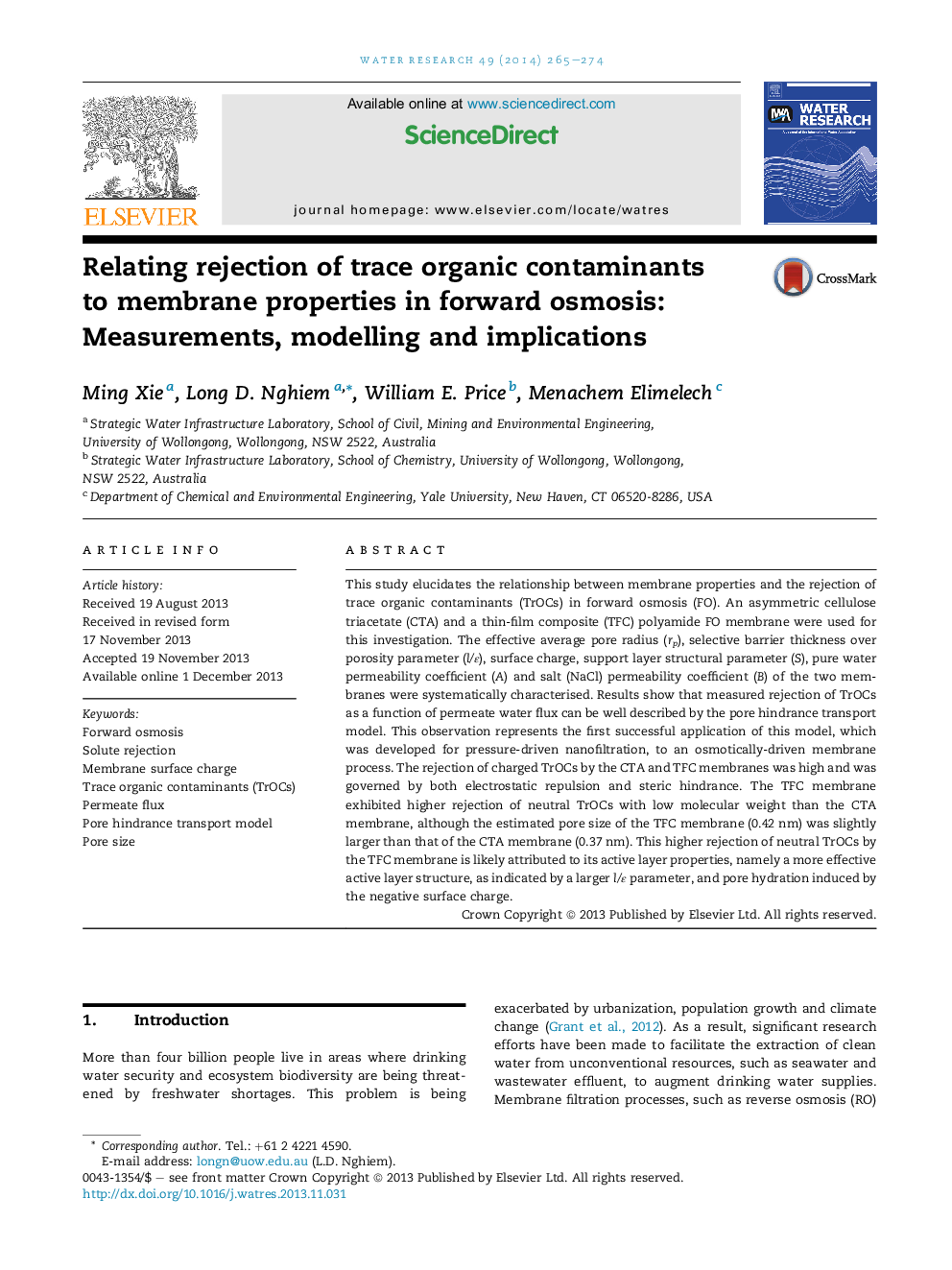| Article ID | Journal | Published Year | Pages | File Type |
|---|---|---|---|---|
| 4481708 | Water Research | 2014 | 10 Pages |
•Pore hindrance transport model adequately describes solute transport in FO.•Separation behaviour is governed by active layer structure and pore hydration.•TFC membrane with larger l/ε value exhibits higher TrOC rejection.•Hydrated pores of the TFC membrane contribute to higher TrOC rejection.
This study elucidates the relationship between membrane properties and the rejection of trace organic contaminants (TrOCs) in forward osmosis (FO). An asymmetric cellulose triacetate (CTA) and a thin-film composite (TFC) polyamide FO membrane were used for this investigation. The effective average pore radius (rp), selective barrier thickness over porosity parameter (l/ε), surface charge, support layer structural parameter (S), pure water permeability coefficient (A) and salt (NaCl) permeability coefficient (B) of the two membranes were systematically characterised. Results show that measured rejection of TrOCs as a function of permeate water flux can be well described by the pore hindrance transport model. This observation represents the first successful application of this model, which was developed for pressure-driven nanofiltration, to an osmotically-driven membrane process. The rejection of charged TrOCs by the CTA and TFC membranes was high and was governed by both electrostatic repulsion and steric hindrance. The TFC membrane exhibited higher rejection of neutral TrOCs with low molecular weight than the CTA membrane, although the estimated pore size of the TFC membrane (0.42 nm) was slightly larger than that of the CTA membrane (0.37 nm). This higher rejection of neutral TrOCs by the TFC membrane is likely attributed to its active layer properties, namely a more effective active layer structure, as indicated by a larger l/ε parameter, and pore hydration induced by the negative surface charge.
